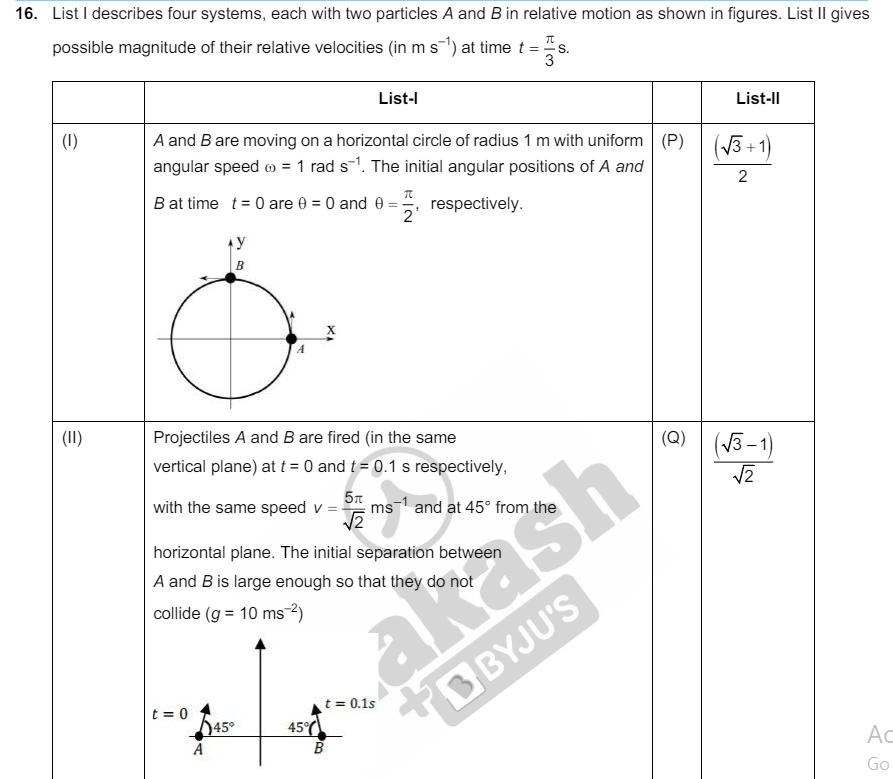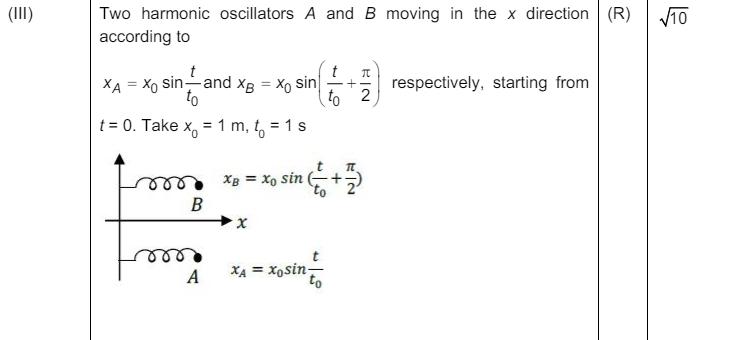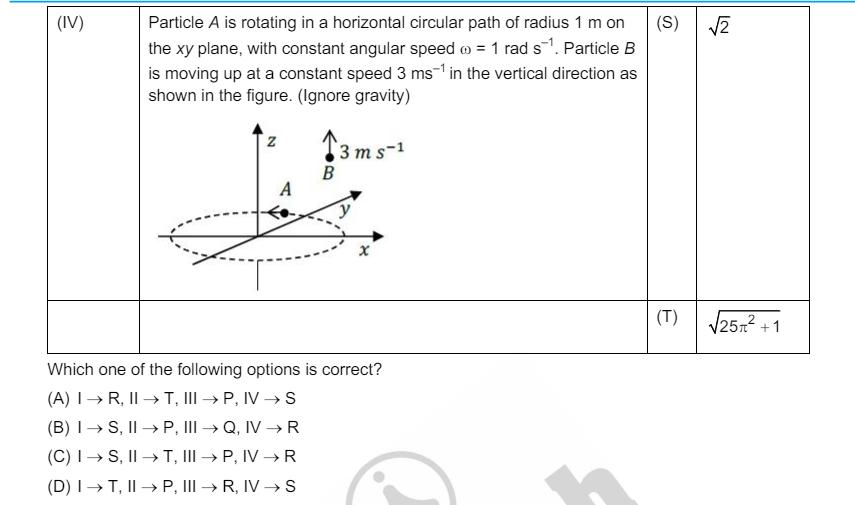16. List I describes four systems, each with two particles A and B in relative motion as shown in figures. List II gives possible



16. List I describes four systems, each with two particles A and B in relative motion as shown in figures. List II gives possible magnitude of their relative velocities (in m s) at time t = 3 S. List-I List-II (I) A and B are moving on a horizontal circle of radius 1 m with uniform (P) angular speed = 1 rad s 1. The initial angular positions of A and (3+1) 2 Bat time t = 0 are 0 = 0 and 0 B = respectively. 2' (Q) (3-1) 2 (II) Projectiles A and B are fired (in the same vertical plane) at t = 0 and t = 0.1 s respectively, with the same speed v = 5T ms and at 45 from the horizontal plane. The initial separation between A and B is large enough so that they do not collide (g = 10 ms-2) t=0 45 A akash BBYJU'S 45 t = 0.1s B Ac Go (III) Two harmonic oscillators A and B moving in the x direction (R) 10 according to XA Xo sin and XB = X sin to t = 0. Take x = 1 m, t = 1 s B XB = xo sin x t + respectively, starting from. to 2 1+ A XA = xosin to (IV) Particle A is rotating in a horizontal circular path of radius 1 m on (S) the xy plane, with constant angular speed = 1 rad s. Particle B is moving up at a constant speed 3 ms1 in the vertical direction as shown in the figure. (Ignore gravity) Z 3 ms-1 B A Which one of the following options is correct? (A) I R, II T, III P, IV S (B) IS, II P, III Q, IV R (C) IS, IIT, III P, IV R (D) IT, IIP, III R, IV S (T) 25+1
Step by Step Solution
There are 3 Steps involved in it
Step: 1

See step-by-step solutions with expert insights and AI powered tools for academic success
Step: 2

Step: 3

Ace Your Homework with AI
Get the answers you need in no time with our AI-driven, step-by-step assistance
Get Started


